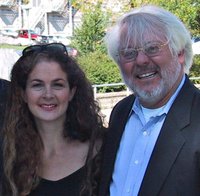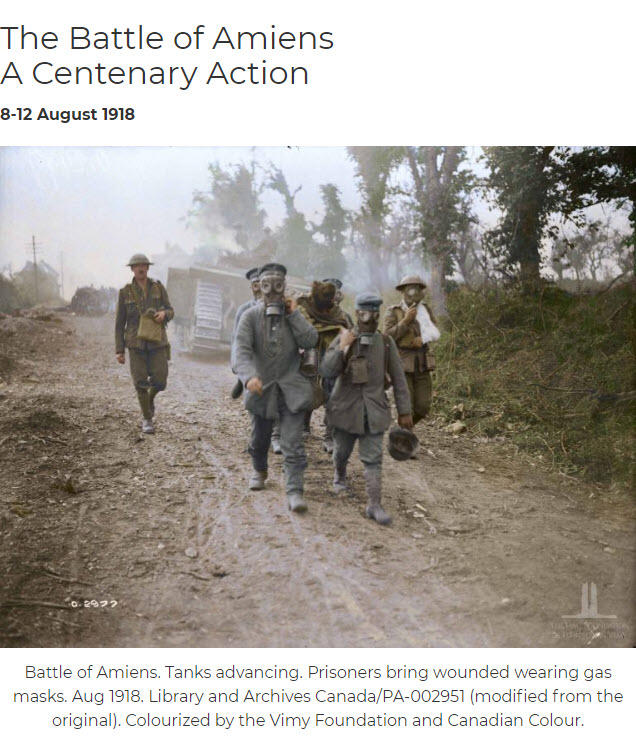
Quick Link
for your convenience!
Human
Rights, Youth Voices etc.
For
Information Concerning the Crisis in Darfur
Whistleblowers
Need Protection

|
|
|
|
The Canadians leading role in Battle of Amiens
that was the decisive battle in WWI
Vimy Foundation
Introduction:
It was strange that Prince William did not mention in his Amiens cathedral address yesterday the Canadian and Australians, who although part of the British forces, played the main part in this early battle in spearheading the attack and gained an astonishing amount of ground in one of the most remarkable feats of WWI. The feats by the Canadians and Australians are proudly known in their respective countries and were part of the fact that they were recognised as nations in their own right. Seems a grave error that they were not justly recognised in this address and an opportunity was lost that their vital role was not highlighted.
The attack was devised by the Australians including the Canadians who both had a reputation for success and innovation. The Canadians had been called upon after only they had been able to take Vimy Ridge after the many failed attempts by the British regiments to do so. It was led by Fourth Army commander Henry Rawlinson with eleven divisions, four Canadian, four Australian and three British with the French mopping up the rear as they did not have the tanks for the element of utter surprise involved breaking out of trench warfare mode.
At 4:20am the Canadian Corps was in the vanguard led by Lt.-Gen. Sir Arthur Currie..The Canadians had established a record as "shock troops" at Vimy Ridge, Hill 70 and Passchendaele and, whenever the Germans knew Currie was going to attack, they prepared for the worst. Getting the Corps to Amiens from Arras had therefore to be accomplished in secret, and was a huge undertaking with all their equipment, horses and men..
On the first day the Canadians gained 13 km (8.1 mi), Australians 11 km (6.8 mi), the French 8 km (5.0 mi), and the British 3.2 km (2.0 mi). The Canadians and Australians continued the attack for the next several days, but German reinforcements of men and aircraft had been poured in, the Allied supply chain began to break down, and the costs for every metre of ground increased. Currie and the Australian Corps' Sir John Monash urged the British Expeditionary Force commander, Field Marshal Sir Douglas Haig, to halt the advance. Haig agreed, telling Currie that Amiens was "the finest operation of the war."
The Canadian Corps soldiers received 10 Victoria Crosses and 3000 other bravery decorations for their fighting at Amiens.
This was the beginning of the end of WWI with the smashing of the German Army morale at great courage and sacrifice particularly by the Canadians and Australians.
Presumably the Prime Minister's office wrote the Prince's speech and it seems to have been more addressed at a French audience and what the British did on their behalf in light of the ongoing Brexit negotiations than to record the actuality and bravery in this new way of fighting led by the Canadians and Australians. How history continues to be rewritten 100 years on, although no doubt at the time in Britain also. It happens to often that the British claim the glory and advisers should be more acute and sensitive to these misleading glory claims by the British armed forces at the expense of the real heroes in other nations.
Bill Macadam in UK
Read the article:

|
|
